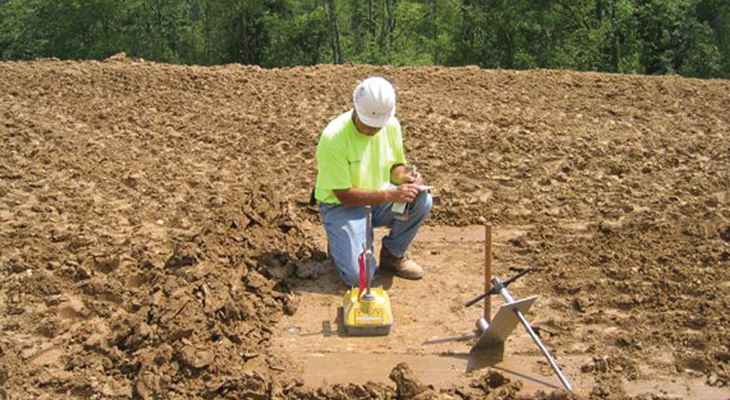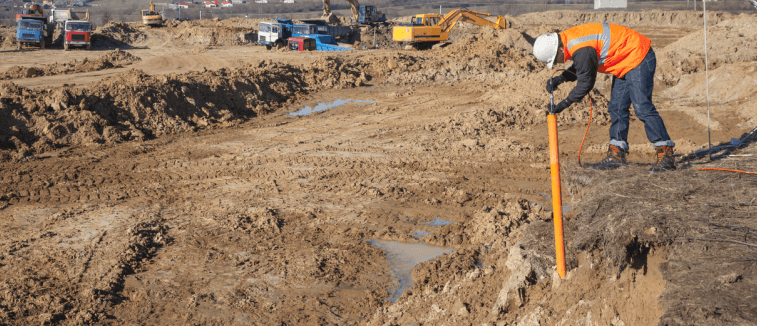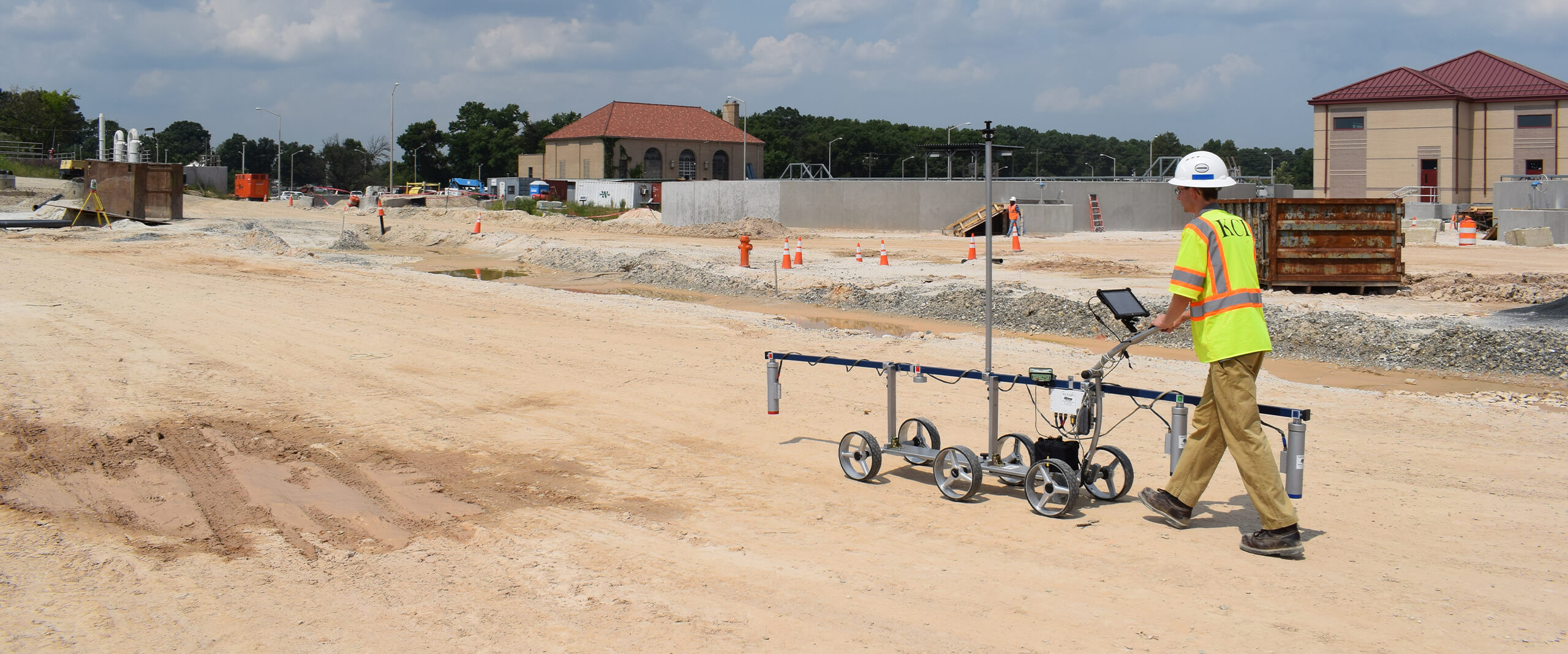The Influence of a Tailings Engineer on Sustainable Mining Practices
Wiki Article
Recognizing the Important Role of the Geotechnical Market in Modern Building Projects and Facilities Development
The geotechnical industry is a keystone of modern-day building and infrastructure advancement, providing crucial insights into soil habits that directly affect project results. Via advanced soil analyses and cutting-edge engineering remedies, geotechnical experts not only make sure architectural integrity however also address sustainability worries amidst progressing ecological requirements. As facilities needs expand and brand-new challenges arise, the relevance of this field comes to be increasingly noticeable. What implications might these advancements have for future tasks and the general safety and security of our constructed environment?Value of Soil Assessment
Soil evaluation plays an important role in the geotechnical sector, acting as the foundation for educated decision-making in building and construction tasks. Exact dirt analysis is vital for figuring out the viability of a site for various kinds of structures, including property homes, commercial buildings, and bridges. By analyzing soil structure, moisture, strength, and density material, engineers can expect potential difficulties and alleviate threats connected with ground instability, disintegration, and negotiation.The analysis procedure typically involves a collection of tests and observations that supply vital info regarding the subsurface conditions. This information notifies the style and building and construction procedures, making sure that frameworks are developed on solid ground with adequate assistance. In addition, comprehending the dirt account enables designers to select suitable building and construction approaches and materials, enhancing source use and decreasing prices.
In enhancement to guaranteeing structural stability, dirt evaluation adds to environmental sustainability. By identifying prospective contamination or negative results on surrounding ecological communities, designers can execute techniques to safeguard these natural resources. Generally, complete dirt assessment is important in the geotechnical area, underpinning the security, performance, and ecological responsibility of building and construction jobs.
Secret Geotechnical Strategies
A variety of vital geotechnical strategies are employed to analyze and enhance the stability and performance of building and construction websites. One foundational method is dirt tasting and testing, which enables engineers to identify the chemical and physical properties of the ground. This information is critical for making informed choices pertaining to foundation design and construction methods.One more vital method is website characterization, which involves the in-depth analysis of dirt and rock problems via approaches such as borehole boring and in-situ testing. Strategies like Requirement Infiltration Examinations (SPT) and Cone Infiltration Tests (CPT) provide valuable data on dirt stamina and stratigraphy.
Ground enhancement methods, such as dirt stabilization and grouting, are additionally crucial in enhancing the load-bearing capacity of weak soils. These approaches can alleviate negotiation and improve total site conditions.
Additionally, incline stability analysis is critical for recognizing prospective landslide threats and making certain the safety and security of excavations. This evaluation usually utilizes mathematical modeling and restriction stability methods to forecast soil actions under numerous problems.
Integrating these geotechnical techniques into building and construction preparation not just enhances project outcomes but likewise guarantees the long-lasting sustainability of infrastructure development.
Effect On Construction Security

In addition, reliable geotechnical design entails implementing reduction strategies for recognized threats. This might consist of soil stablizing strategies, retaining frameworks, or drainage systems to ease hydrostatic stress. By attending to these aspects, building and construction teams can minimize the possibility of accidents and improve employee safety and security.
Furthermore, constant tracking of website problems is crucial throughout construction. Geotechnical instruments can offer real-time information concerning ground movement and security, allowing for timely treatments when needed.
Essentially, the geotechnical industry plays a critical duty in safeguarding building projects. By prioritizing ground honesty and using extensive analysis techniques, the geotechnical market not only safeguards the labor force however also adds to the long life and dependability of built facilities.
Sustainability in Geotechnical Practices

Additionally, geotechnical engineers are now utilizing innovative technologies, such as geosynthetics, which boost soil stability while minimizing the quantity of material required. This not only saves sources however additionally brings about less waste generation (consulting engineer). The integration of lasting style principles right into geotechnical design urges the use of renewable resource sources in construction procedures, further lowering carbon exhausts
By performing these evaluations, geotechnical professionals can establish methods that mitigate damaging effects, guaranteeing compliance with environmental policies. Overall, the focus on sustainability within geotechnical practices not only adds to the durability and strength of infrastructure however likewise advertises a liable technique to land and source administration.
Future Trends in Geotechnical Engineering
Development is driving the future of geotechnical design, as emerging technologies and methods improve the sector. The combination of sophisticated data analytics and man-made intelligence is readied to reinvent site investigation and risk analysis, enabling designers to make even more educated choices based upon real-time information. Moreover, the use of geosynthetic products is acquiring grip, providing sustainable options that boost dirt security and reduce environmental impact.Another considerable pattern is the fostering of automated and robot systems for surveillance and building and construction procedures. These modern technologies not just improve precision however also improve safety and security by minimizing human participation in hazardous atmospheres. In addition, the implementation of Building Information Modeling (BIM) in geotechnical design promotes boosted partnership among stakeholders, optimizing task delivery and lowering prices.
As climate adjustment postures new obstacles, the industry is increasingly concentrating on durability and flexibility in layout practices, guaranteeing infrastructure can stand up to extreme climate events. Ultimately, the recurring pattern towards sustainability will certainly drive innovation in green products and methods, straightening geotechnical design with broader ecological goals. Jointly, these trends will certainly shape a more reliable, lasting, and resilient geotechnical landscape for future jobs.
Final Thought

The geotechnical market is a cornerstone of contemporary building and facilities growth, providing vital understandings into dirt behavior that straight influence project outcomes. engineer of record.Dirt assessment plays a crucial role in the geotechnical industry, serving as the foundation for notified decision-making in building and construction jobs. In general, detailed dirt analysis is vital in the geotechnical area, underpinning the safety, effectiveness, and environmental responsibility of building and construction tasks
Building and construction safety and security is significantly affected by geotechnical techniques, as the security and honesty of the ground straight impact the total security of a building and construction website.In final thought, the geotechnical market is vital in modern-day building and construction and facilities development, supplying vital analyses that ensure architectural stability and safety.
Report this wiki page